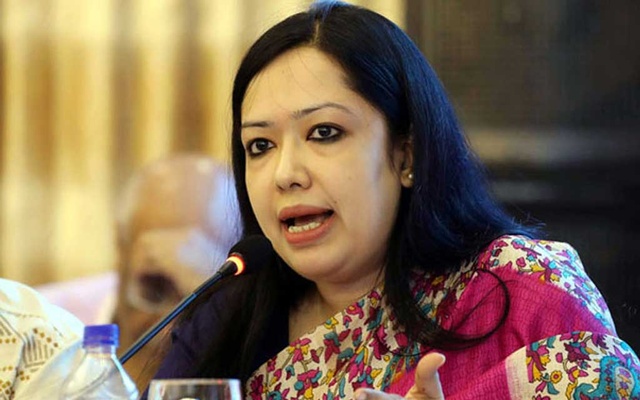TBS

The Bangladesh Bank has been working to introduce Inclusive Instant Payment Systems (IIPS) with financial support from the Gates Foundation to enable secure and low-cost real-time fund transfers across all financial institutions.
Unlike the conventional Instant Payment System, IIPS is designed with an explicit mandate to reach unbanked and underserved users, ensuring accessibility even for those with low literacy or basic feature phones.
Though the central bank had earlier attempted to implement interoperable payment through Binimoy, the initiative failed.
The Policy Research Institute (PRI) of Bangladesh recently held a stakeholder discussion on interoperable payment with the support of Gates Foundation. On the sidelines of the event, Jason Lamb, deputy director and Snigdha Ali, Bangladesh Country Lead from IFS (Inclusive Financial System) of Gates Foundation spoke to TBS about the challenges and opportunities of implementing IIPS.
TBS: What is your observation about digital transformation in Bangladesh and how capable do you think our banks are to join IIPS?
Jason Lamb: I would say that Bangladesh has gone about as far as it can go without an interoperable payments infrastructure that works at a retail level. For instance, bKash has 80 million customers. Nagad is growing quickly. The banks are well established, but they do not have the ability to communicate fluently with each other.
So if you want money to flow freely without friction, you need to have this infrastructure in place.
And I know that there have been attempts with Binimoy in the past to do this. So the skills are there, but that initiative did not have the right stakeholder engagement to be successful.
But I think in the past, there wasn’t a forum and so there wasn’t the opportunity for stakeholders to engage and begin to own the solution.
So that’s what we’re trying to do here: really engage the stakeholders in the ecosystem, so that they can begin to discuss all the different issues around the governance of this payment system, the pricing, the scheme rules and all those things.
And so now, we’re intending that this will engage stakeholders well… so that Bangladesh can have a truly digital payment system.
“If you want money to flow freely without friction, you need to have this infrastructure in place… there have been attempts with Binimoy in the past to do this. So the skills are there, but that initiative did not have the right stakeholder engagement to be successful.” Jason Lamb
TBS: How will the IIPS initiative differ from Binimoy?
Snigdha Ali: Okay, so when Binimoy was built, it was done so under the leadership of the ICT ministry and not the regulator, not the central bank. That was a kind of a gap from the very beginning.
There wasn’t enough or any stakeholder engagement during any phase of — from being built to deployment. That is the learning we took from the previous experience even though we were not involved in Binimoy.
The central bank also learned from that. And I’m guessing the policymakers, the government also learned from that. That’s why we started even before the project went live. We started this dialogue, this stakeholder engagement process so that we hear from the industry and we do not repeat the same mistakes.
We think we will create enough incentives through expansion of the clientele base so that the banks who already have the capability, the directive and the technology to become even more digitally inclusive.
TBS: How will IIPS benefit the stakeholders? There is a chance that some might lose business while others may gain, such as in terms of transaction or number of customers.
Ali: I think that it’s up to the individual stakeholders; everyone has the opportunity to gain more, but they have to actually do something in order to achieve that. They have to move towards this solution. I think those that just simply resist participating will lose.
For example, a bank who already spends a significant amount on onboarding its clients, once that bank is participating in the IIPS and there are already, say a million customers also integrated with the IIPS, the bank automatically has access to these clients and the clients also have access to the bank. They don’t have to be direct clients of that particular bank, but they can operate through the IIPS, send money to that bank, get money sent to them from that bank.
The bank can then, with this amount saved from investing on onboarding new clients, say through e-KYC training, etc., focus on innovating products for financial products and services to make it more competitive or more advantageous for them.
That way they benefit, that is their business growth model.
Lamb: We’ve seen in other markets that have adopted IIPS that the customer base grows for anybody who’s participating. So it might start as a small pie but grow larger because everyone is interconnected.
So, let’s say a Nagad or a bKash customer can access a bank account. They can open a savings account over there. So this is the opportunity for the customers. As for the stakeholders, they can then attract customers that they would never have been able to reach before, such as in the rural area.
TBS: How will IIPS lower transaction costs and how will it impact low-income users?
Ali: How we or the central bank can reduce the cost will depend on a series of processes of calculating the cost, the operational cost, the onboarding cost, the transactional cost and so on.
If the lower income group finds it less costly, more convenient, there’s no way that they will just lag behind. They will be integrated in the system. And with the population size of Bangladesh, with the majority of people living in the rural areas, which is again also a low-income segment of the population, I think the potential is huge for both impact and cost.
Lamb: I think the other thing I would say is that, you know, depending on the business scheme rules that are decided, with Bangladesh Bank and the providers, the cost could be zero to the customers.
That’s the case in RAAST in Pakistan and they don’t pay anything for the transaction there because the central bank of Pakistan in this case said they actually want to grow in volume and they are going to keep the cost at zero to bring more and more people into the system.
Then those who are providing products and services to those customers can make their money in some other way instead of a per transaction basis.
If the lower income group finds it less costly, more convenient, there’s no way that they will just lag behind. They will be integrated in the system. And with the population size of Bangladesh, with the majority of people living in the rural areas… I think the potential is huge for both impact and cost. Snigdha Ali
TBS: What are the major regulatory challenges to rolling out IIPS in Bangladesh?
Lamb: I think the biggest challenge is stakeholder engagement, which is why we started here. I think the other one is consumer literacy and understanding, as well as trust.
All these things are hard to build, easy to lose.
I know the Bangladesh Bank understands these challenges and is dedicated to solving them.
These challenges are going to come up over and over and over again. As the market evolves, different things happen. I mean, maybe there’s a new kind of fraudulent event that all the stakeholders are going to have to manage through, but that’s the way of the world.
TBS: If we do implement IIPS, how do you see our digital economy changing in the next five years?
Lamb: So I would imagine you’d have over 80% inclusion. There could also be a growth in GDP by 5% to 10% because of inclusion, greater access to credit, and job creation.
There’s a lot of macroeconomic effects besides the consumer options, and money that financial institutions are going to make. The Bangladesh Bank is leading this change and they know that in the medium term, it will be good for everybody.
Not every single player is going to say this is good for me. But at the end of the day, it’s going to be good for the economy, it’s going to be good for Bangladesh, it’s going to be good for the financial sector and it’s going to be good for consumers.
Source : https://www.tbsnews.net/features/panorama/stakeholder-engagement-needed-make-interoperable-payment-successful-1238276









